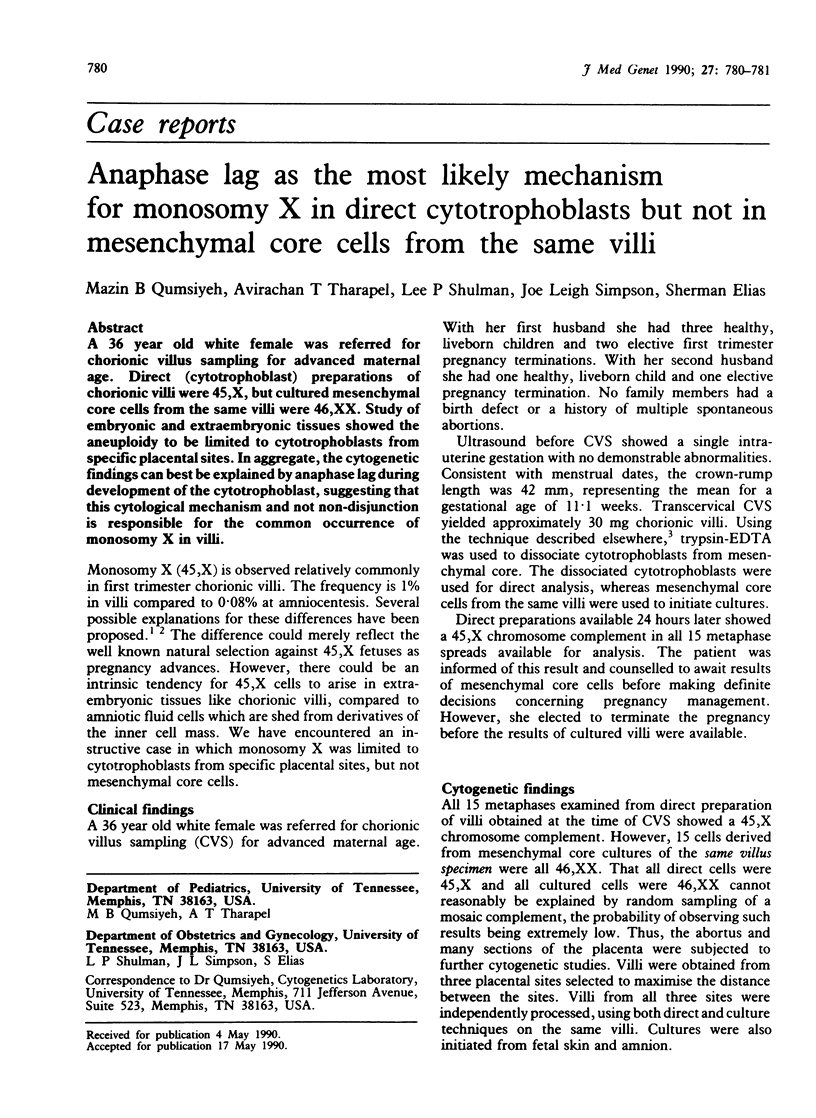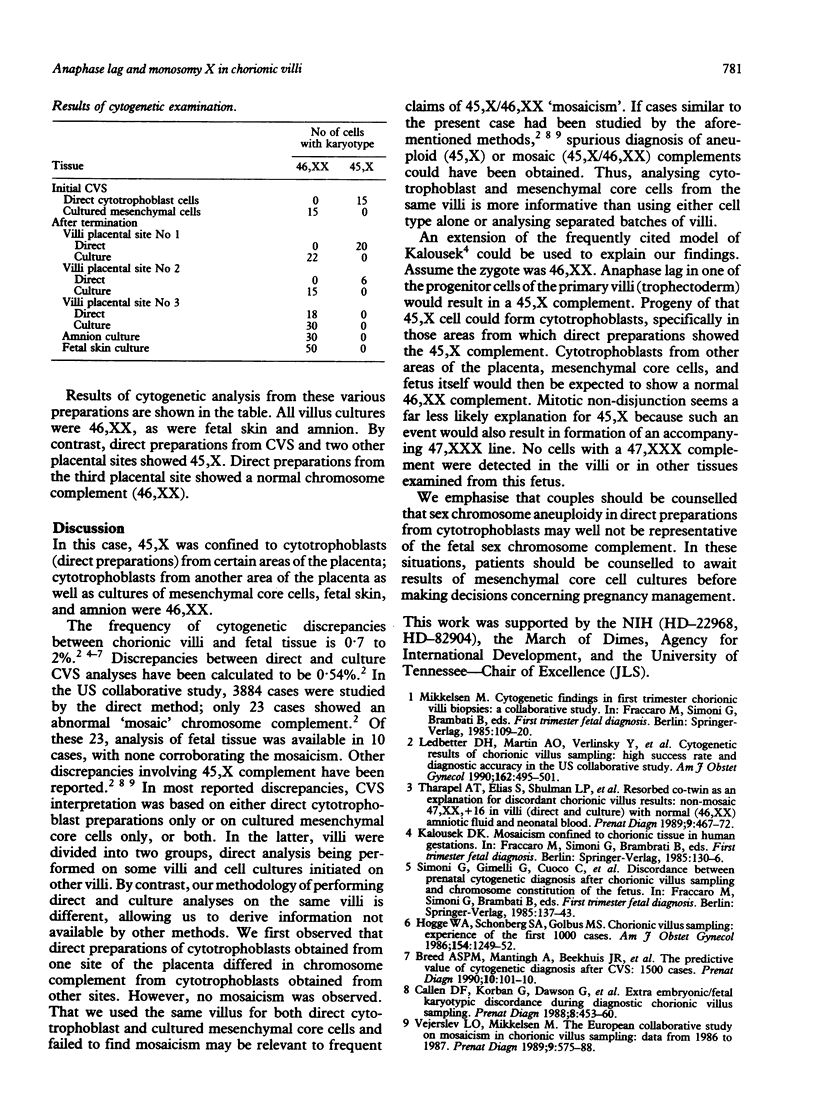Abstract
A 36 year old white female was referred for chorionic villus sampling for advanced maternal age. Direct (cytotrophoblast) preparations of chorionic villi were 45,X, but cultured mesenchymal core cells from the same villi were 46,XX. Study of embryonic and extraembryonic tissues showed the aneuploidy to be limited to cytotrophoblasts from specific placental sites. In aggregate, the cytogenetic findings can best be explained by anaphase lag during development of the cytotrophoblast, suggesting that this cytological mechanism and not non-disjunction is responsible for the common occurrence of monosomy X in villi.
Full text
PDF

Selected References
These references are in PubMed. This may not be the complete list of references from this article.
- Breed A. S., Mantingh A., Beekhuis J. R., Kloosterman M. D., ten Bolscher H., Anders G. J. The predictive value of cytogenetic diagnosis after CVS: 1500 cases. Prenat Diagn. 1990 Feb;10(2):101–110. doi: 10.1002/pd.1970100206. [DOI] [PubMed] [Google Scholar]
- Callen D. F., Korban G., Dawson G., Gugasyan L., Krumins E. J., Eichenbaum S., Petrass J., Purvis-Smith S., Smith A., Den Dulk G. Extra embryonic/fetal karyotypic discordance during diagnostic chorionic villus sampling. Prenat Diagn. 1988 Jul;8(6):453–460. doi: 10.1002/pd.1970080610. [DOI] [PubMed] [Google Scholar]
- Hogge W. A., Schonberg S. A., Golbus M. S. Chorionic villus sampling: experience of the first 1000 cases. Am J Obstet Gynecol. 1986 Jun;154(6):1249–1252. doi: 10.1016/0002-9378(86)90707-6. [DOI] [PubMed] [Google Scholar]
- Ledbetter D. H., Martin A. O., Verlinsky Y., Pergament E., Jackson L., Yang-Feng T., Schonberg S. A., Gilbert F., Zachary J. M., Barr M. Cytogenetic results of chorionic villus sampling: high success rate and diagnostic accuracy in the United States collaborative study. Am J Obstet Gynecol. 1990 Feb;162(2):495–501. doi: 10.1016/0002-9378(90)90419-8. [DOI] [PubMed] [Google Scholar]
- Tharapel A. T., Elias S., Shulman L. P., Seely L., Emerson D. S., Simpson J. L. Resorbed co-twin as an explanation for discrepant chorionic villus results: non-mosaic 47,XX,+16 in villi (direct and culture) with normal (46,XX) amniotic fluid and neonatal blood. Prenat Diagn. 1989 Jul;9(7):467–472. doi: 10.1002/pd.1970090703. [DOI] [PubMed] [Google Scholar]
- Vejerslev L. O., Mikkelsen M. The European collaborative study on mosaicism in chorionic villus sampling: data from 1986 to 1987. Prenat Diagn. 1989 Aug;9(8):575–588. doi: 10.1002/pd.1970090807. [DOI] [PubMed] [Google Scholar]


